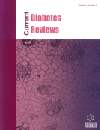
Full text loading...
We use cookies to track usage and preferences.I Understand
Plants are used in medicine because they are low-cost, widely available, and have few side effects (compared to pharmacological treatment). Plants have phytocompounds with antidiabetic properties that can be delivered using nanoparticles (NPs).
To describe the antidiabetic properties of green synthesized NPs (GSNPs) and their characterization methods.
Three databases were consulted using the terms “type 2 diabetes mellitus,” “antidiabetic effects,” “phytochemicals,” “plants,” and “nanoparticles.” Studies describing the antidiabetic effects (in vitro or animal models) of NPs synthesized by plant extracts and characterizing them through UV-Vis spectroscopy, FTIR, XRD, SEM, TEM, and DLS were included.
16 studies were included. In vitro studies reported enzyme inhibition values between 11% (H. polyrhizus) and 100% (A. concinna) for alfa-amylase and between 41.1% (M. zapota) and 100% (A. concinna) for alfa-glucosidase. Animal studies with Wistar Albino rats having diabetes (induced by alloxan or streptozotocin) reported improved blood glucose, triglycerides, total cholesterol, LDL, and HDL after treatment with GSNPs. Regarding characterization, NP sizes were measured with DLS (25-181.5 nm), SEM (52.1-91 nm), and TEM (8.7-40.6 nm). The surface charge was analyzed with zeta potential (-30.7 to -2.9 mV). UV-Vis spectroscopy was employed to confirm the formations of AgNPs (360-460 nm), AuNPs (524-540 nm), and ZnONPs (300-400 nm), and FTIR was used to identify plant extract functional groups.
GSNP characterization (shape, size, zeta potential, and others) is essential to know the viability and stability, which are important to achieve health benefits for biomedical applications. Studies reported good enzyme inhibition percentages in in vitro studies, decreasing blood glucose levels and improving lipid profiles in animal models with diabetes. However, these studies had limitations in the methodology and potential risk of bias, so results need careful interpretation.

Article metrics loading...

Full text loading...
References


Data & Media loading...
Supplements

